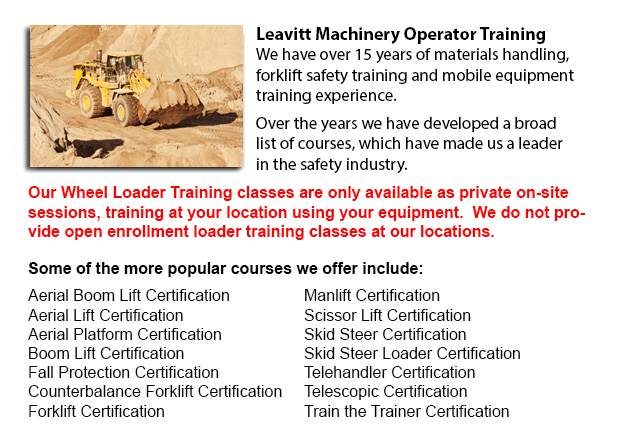
Lift trucks are accessible in a variety of various models which have various load capacities. Nearly all average forklifts utilized inside warehouse environment have load capacities of 1-5 tons. Larger scale units are used for heavier loads, like for example loading shipping containers, could have up to 50 tons lift capacity.
The operator can make use of a control to raise and lower the blades, that may likewise be known as "blades or tines". The operator of the forklift could tilt the mast so as to compensate for a heavy loads tendency to angle the blades downward. Tilt provides an ability to operate on rough ground too. There are yearly competitions intended for experienced forklift operators to compete in timed challenges and obstacle courses at local lift truck rodeo events.
General operations
All lift trucks are rated for safety. There is a specific load limit and a specified forward center of gravity. This very important info is supplied by the manufacturer and positioned on the nameplate. It is important loads do not exceed these details. It is prohibited in lots of jurisdictions to tamper with or remove the nameplate without getting permission from the lift truck manufacturer.
Most lift trucks have rear-wheel steering to be able to improve maneuverability. This is particularly helpful within confined spaces and tight cornering areas. This particular type of steering differs quite a little from a driver's initial experience along with various motor vehicles. Since there is no caster action while steering, it is no essential to use steering force to be able to maintain a constant rate of turn.
Instability is another unique characteristic of lift truck operation. A continuously varying centre of gravity happens with each and every movement of the load between the forklift and the load and they have to be considered a unit during operation. A forklift with a raised load has gravitational and centrifugal forces which could converge to lead to a disastrous tipping accident. So as to avoid this possibility, a lift truck must never negotiate a turn at speed with its load raised.
Lift trucks are carefully built with a load limit intended for the blades. This limit is decreased with undercutting of the load, that means the load does not butt against the fork "L," and also decreases with fork elevation. Usually, a loading plate to consult for loading reference is situated on the lift truck. It is dangerous to utilize a lift truck as a personnel lift without first fitting it with specific safety devices like for instance a "cherry picker" or "cage."
Forklift utilize in warehouse and distribution centers
Lift trucks are an essential component of warehouses and distribution centers. It is important that the work surroundings they are placed in is designed to be able to accommodate their safe and efficient movement. With Drive-In/Drive-Thru Racking, a lift truck has to travel in a storage bay which is several pallet positions deep to set down or take a pallet. Operators are usually guided into the bay through rails on the floor and the pallet is located on cantilevered arms or rails. These tight manoeuvres need trained operators to be able to carry out the job safely and efficiently. For the reason that each and every pallet requires the truck to go into the storage structure, damage done here is more common than with various types of storage. Whenever designing a drive-in system, considering the dimensions of the blade truck, including overall width and mast width, must be well thought out to be able to be sure all aspects of a safe and effective storage facility.
-
Narrow Aisle Forklift / Order Picker Training / Electric Pallet Jack / Electric Pallet Truck Training in Kingston
A pallet lift is a piece of equipment dedicated in the moving of pallets of various dimensions and weights. They might be utilized as an accessory for forklifts, cranes and other styles of heavy machinery or be applied on their own. Pallet lifts are... More -
Kingston Forklift Training School
Kingston Forklift Training School - Forklift Training School - Industry and federal regulators have established the criteria for forklift safety training based on their existing regulations and standards. People wishing to operate a forklift must fin... More -
Kingston Scissor Lift Certification
Kingston Scissor Lift Certification - Scissor lift platforms are utilized at work locations to enable tradespeople - such as iron workers, welders and masons - to reach their work. Making use of a scissor lift platform is usually secondary to their t... More -
Kingston Boom Lift Safety Training
Kingston Boom Lift Safey Training - Boom lifts are a type of elevated work platform or aerial lifting device that are normally utilized in warehousing, construction and industry. Boom lifts could be made use of in practically whichever environment du... More -
Kingston Fall Protection Ticket
Kingston Fall Protection Ticket - Fall-related incidents are the number one reason of death in the construction business. The possibility for fall accidents very much increases based upon the type of work which is being accomplished within your workp... More -
Telehandler Training in Kingston
Telescopic handlers normally called telehandlers for short, are an extremely popular piece of heavy construction machinery. They are widely utilized in the construction and agricultural trades. These machines have farthest reaching ability and are ab... More -
Kingston Warehouse Forklift Training Programs
Kingston Warehouse Forklift Training Programs - Warehouses could either be retail, industrial or commercial facilities, functioning from bulk product retailing to product distribution services. Regardless of the type of warehouse, personnel inside wa... More -
Kingston Heavy Equipment Ticket
Kingston Heavy Equipment Ticket - Depending on the nature of the job at hand, the kind of construction machinery that a heavy equipment operator utilizes varies. Every type of equipment is built to do particular jobs in the most effective method comm... More

Forklift Certification Kingston
TOLL FREE: 1-888-254-6157
Kingston, Ontario
forkliftcertificationkingston.com
Email Us
About Us


